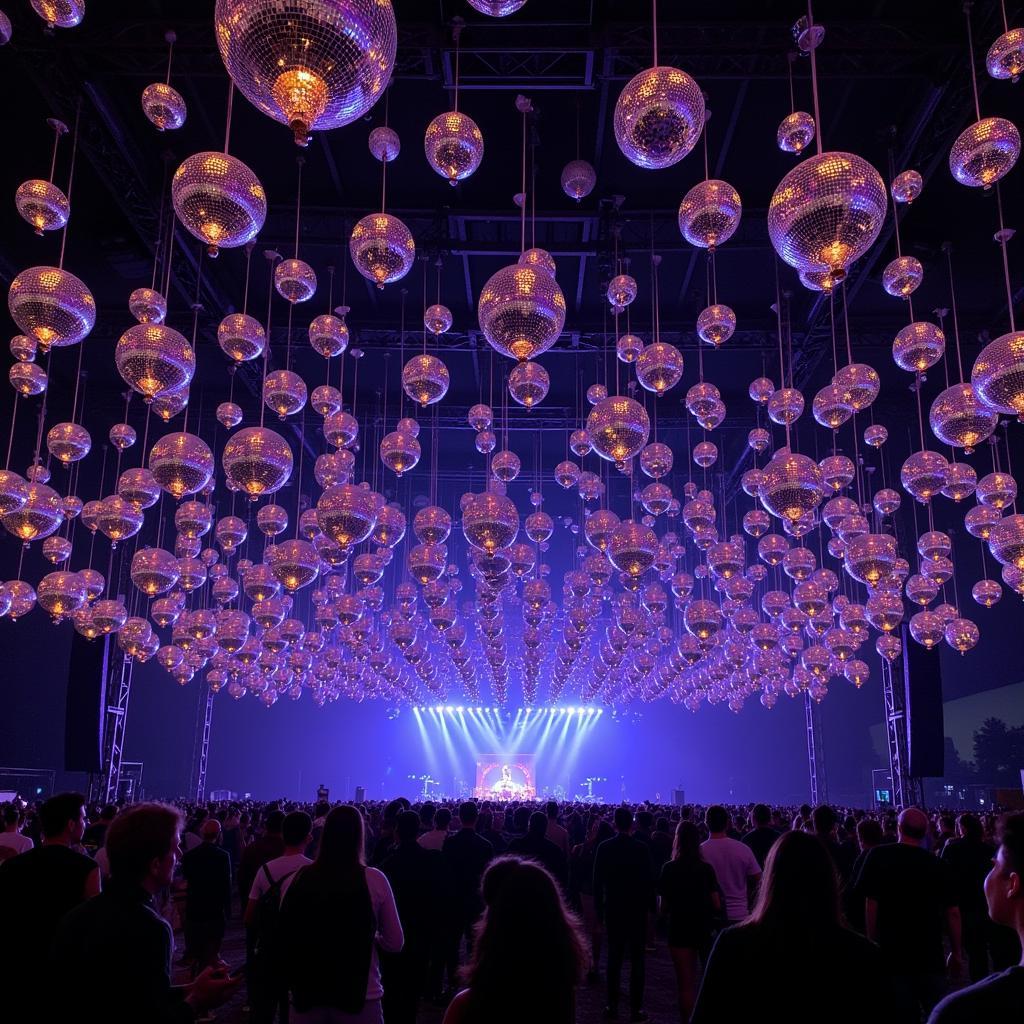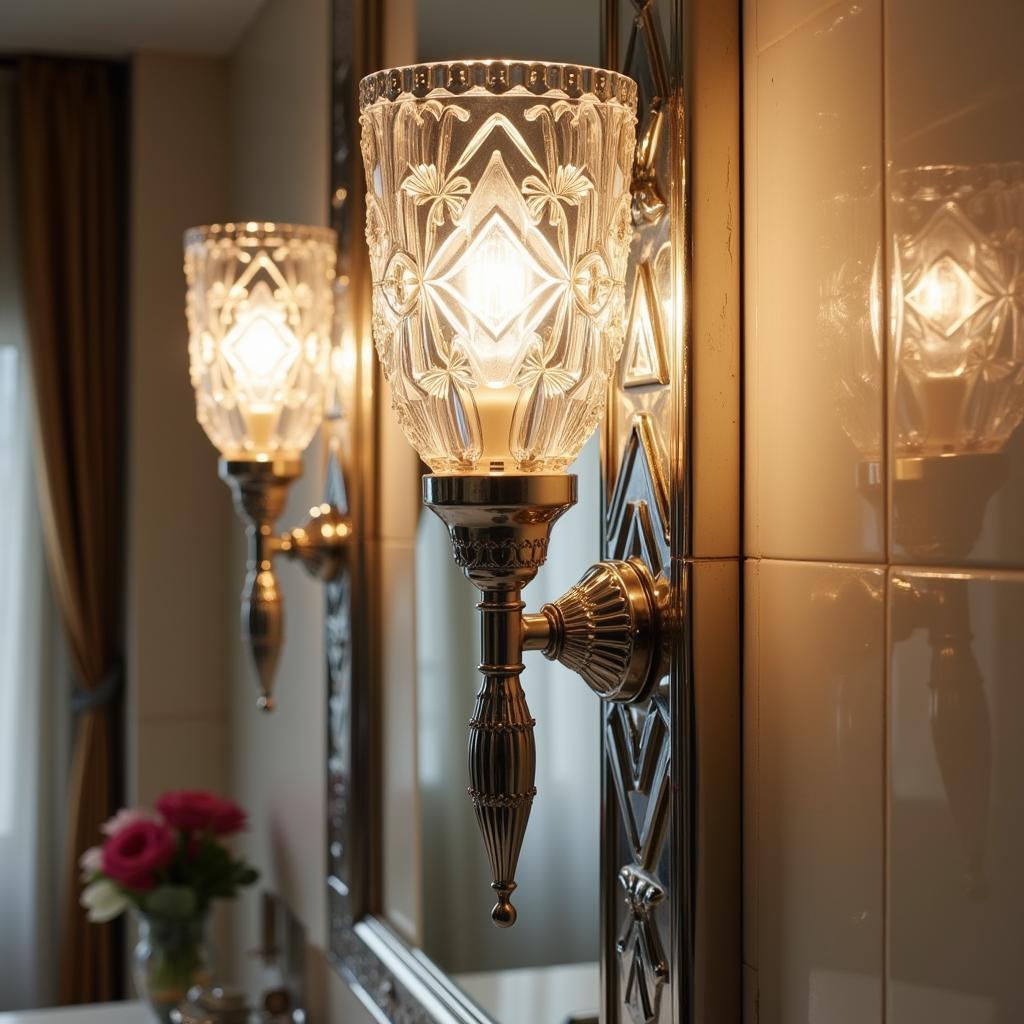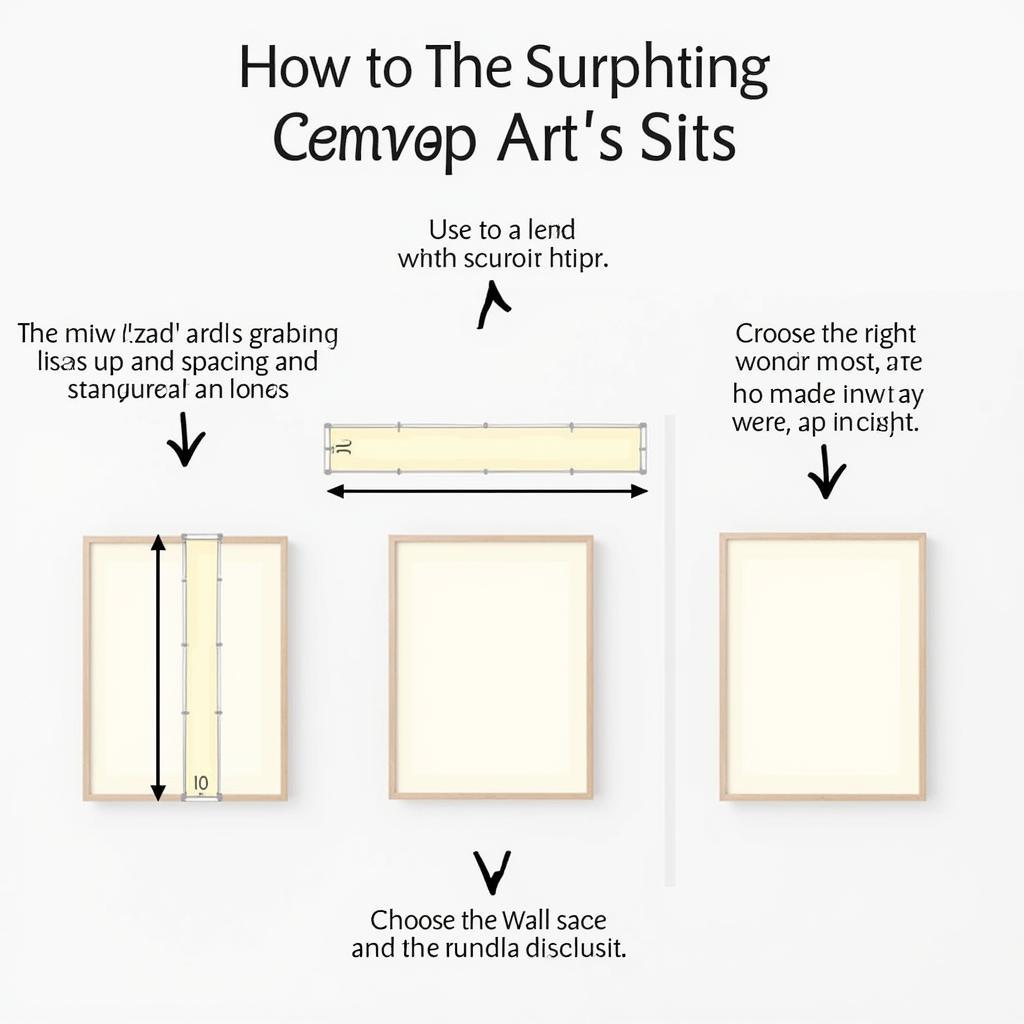Exploring the Vibrant World of Flower Mola Art
Flower Mola Art is a captivating textile art form practiced by the Guna people of Panama and Colombia. It involves layering colorful fabrics to create intricate designs, often featuring stylized depictions of flowers, animals, and geometric patterns. This unique technique offers a window into the rich cultural heritage of the Guna and showcases their exceptional artistic skills. From its origins rooted in tradition to its evolution in the contemporary art world, flower mola art continues to inspire and fascinate.
Understanding the Basics of Flower Mola Art
Traditionally, mola panels are incorporated into the blouses of Guna women, transforming everyday garments into stunning displays of artistry. The word “mola” itself refers to the blouse, showcasing the integral role this art form plays in Guna culture. The process of creating a mola is meticulous and labor-intensive, involving reverse appliqué and appliqué techniques. Layers of fabric are carefully cut and sewn together, revealing the colors beneath in intricate patterns.
What makes flower mola art so distinctive is the way it blends geometric abstraction with realistic representations, creating a harmonious interplay of shapes and colors. The vibrant hues and intricate designs reflect the Guna people’s deep connection to nature and their vibrant cultural traditions.
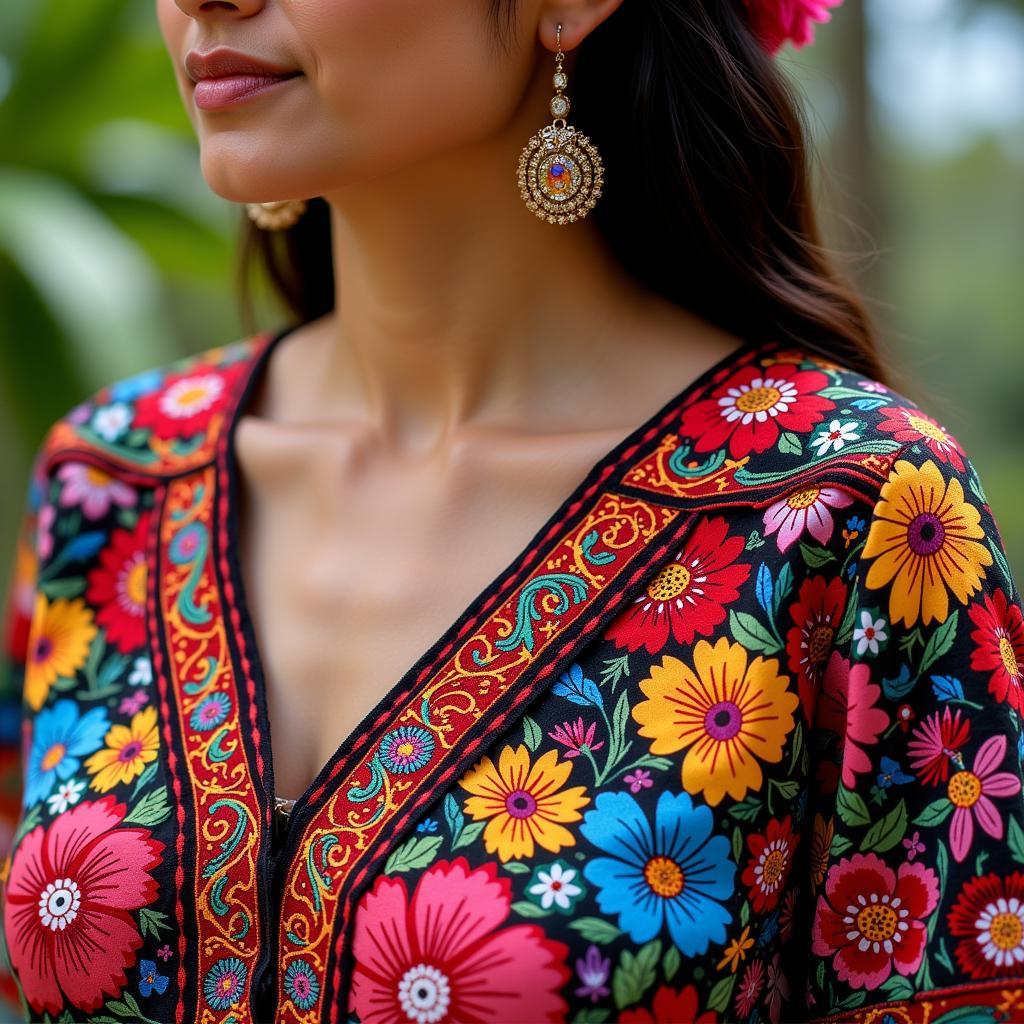 Traditional Guna Blouse with Intricate Flower Mola Art
Traditional Guna Blouse with Intricate Flower Mola Art
Flower Mola Art: A Symbol of Guna Culture
More than just decoration, flower mola art carries profound cultural significance for the Guna people. It serves as a visual language, expressing their stories, beliefs, and connection to the natural world. The patterns and motifs woven into each mola often hold symbolic meanings, representing elements of Guna cosmology, myths, and everyday life.
Flower mola art also plays a crucial role in maintaining Guna cultural identity. In a world increasingly influenced by globalization, the practice of mola making provides a tangible link to the past, preserving ancestral traditions and fostering a sense of community.
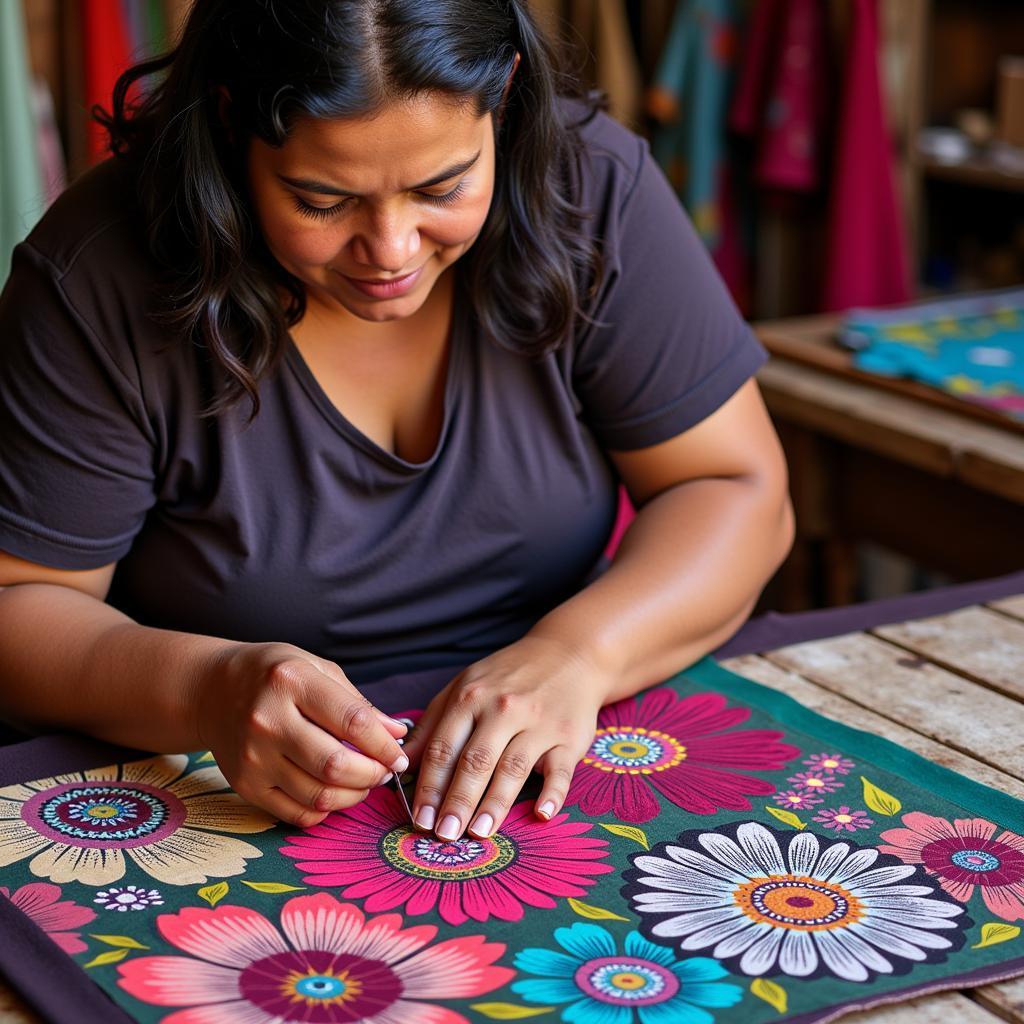 Guna Woman Creating Flower Mola Art
Guna Woman Creating Flower Mola Art
Exploring Different Styles of Flower Mola Art
While traditional flower mola art remains prevalent, contemporary artists are also exploring new styles and techniques, pushing the boundaries of this ancient art form. Some artists incorporate modern themes and materials, while others experiment with different color palettes and compositions, resulting in a diverse range of mola expressions. This evolution reflects the dynamic nature of art and the ongoing dialogue between tradition and innovation.
How is flower mola art made?
Flower mola art is created through a meticulous process of reverse appliqué and appliqué. Multiple layers of fabric are sewn together, and then sections of the top layers are carefully cut away to reveal the colors beneath, creating intricate designs.
Collecting and Appreciating Flower Mola Art
For those captivated by the beauty and cultural significance of flower mola art, collecting these unique textiles can be a rewarding experience. Whether you’re a seasoned collector or just starting out, understanding the different styles, techniques, and historical context of mola art can enhance your appreciation. When purchasing mola art, consider supporting fair trade practices to ensure that the Guna artisans receive fair compensation for their work.
“Authentic flower mola art is more than just a beautiful textile; it’s a piece of living history,” says Dr. Elena Martinez, an expert in indigenous art and textiles. “Each mola tells a story, reflecting the rich cultural heritage of the Guna people.”
Conclusion
Flower mola art offers a vibrant glimpse into the heart of Guna culture. From the intricate designs to the symbolic meanings embedded within each piece, this textile art form continues to captivate and inspire. By exploring and appreciating flower mola art, we gain a deeper understanding of the rich cultural tapestry that makes our world so fascinating.
FAQ
-
What is mola art?
Mola art is a textile art form practiced by the Guna people of Panama and Colombia, involving layering colorful fabrics to create intricate designs. -
What does “mola” mean?
“Mola” refers to the traditional blouse worn by Guna women, which often features mola panels. -
How is mola art made?
Mola art is created through reverse appliqué and appliqué techniques, where layers of fabric are cut and sewn to reveal the colors beneath. -
What is the cultural significance of mola art?
Mola art serves as a visual language for the Guna people, expressing their stories, beliefs, and connection to nature. -
Where can I purchase authentic mola art?
Authentic mola art can be purchased from reputable dealers, fair trade organizations, and directly from Guna artisans. -
How do I care for mola art?
Mola art should be handled with care and stored in a cool, dry place to preserve its vibrant colors and intricate designs. -
What are some common motifs in mola art?
Common motifs in mola art include flowers, animals, geometric patterns, and depictions of Guna mythology and daily life.
You can find more information on our website about other traditional art forms. Explore more articles on textile art and indigenous cultures.
Contact us for any assistance: Phone: 02462573573, Email: [email protected] or visit us at Savico Megamall, 7-9 Đ. Nguyễn Văn Linh, Gia Thụy, Long Biên, Hà Nội 10000, Việt Nam. We have a 24/7 customer service team.
